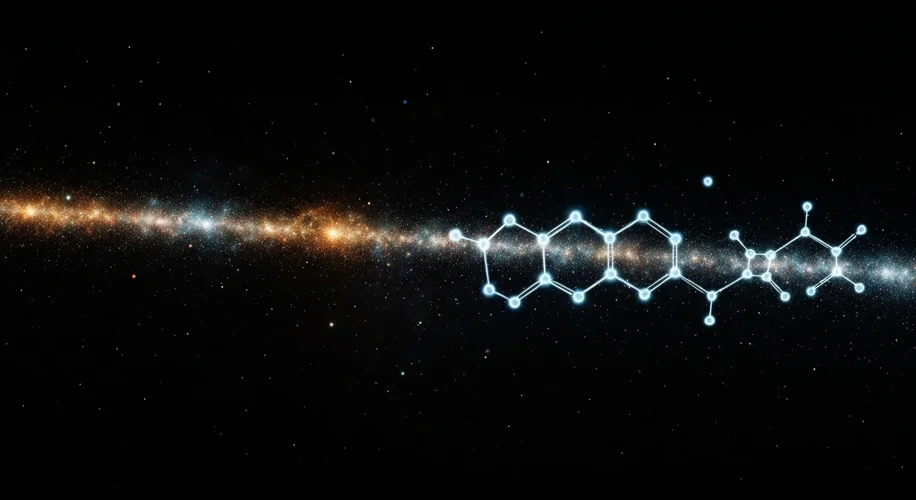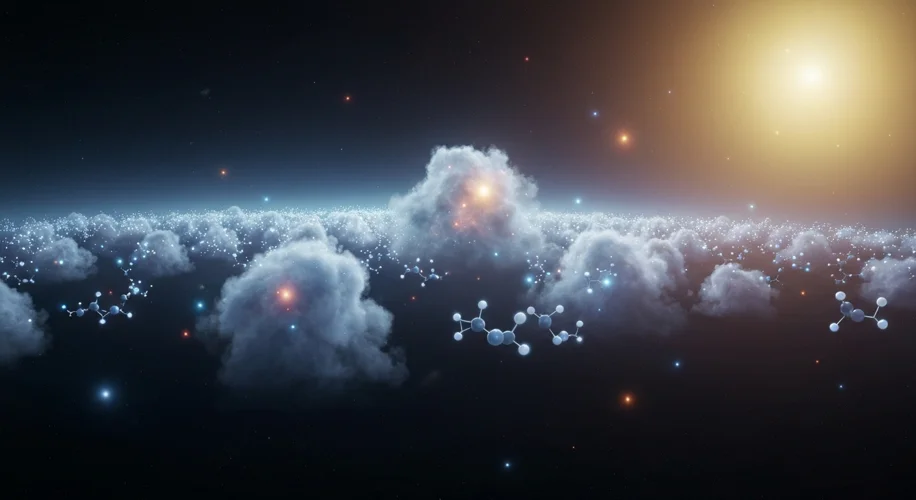Imagine a time before stars, before galaxies, before anything remotely familiar. A time when the cosmos was a vast, dark, and incredibly hot soup of fundamental particles. In this primordial chaos, an extraordinary event occurred: the formation of the very first molecule. For 13 billion years, its existence was a theoretical whisper, a crucial missing piece in our understanding of how the universe evolved. Until now.
On August 4, 2025, a team of scientists achieved what was once considered impossible – they successfully recreated helium hydride (HeH+), the universe’s inaugural molecule, in a laboratory setting. This groundbreaking achievement isn’t just a scientific triumph; it’s a cosmic archaeological dig, allowing us to peer back to the dawn of time and understand the building blocks of everything we see today.
The Big Bang, that cataclysmic event that birthed our universe, left behind a searingly hot plasma. As the cosmos expanded and cooled, a pivotal moment arrived: the formation of the first atoms. Protons, the positively charged hearts of hydrogen atoms, began to capture electrons, forming neutral hydrogen. But in the inky blackness of this nascent universe, something else was happening. Another interaction, seemingly minor, was poised to play a monumental role.
Helium, the second most abundant element, also existed in this early plasma. When a helium atom, with its two protons and two electrons, encountered a positively charged hydrogen ion (a proton), a remarkable bond could form. This was the birth of helium hydride, HeH+. It was the first chemical compound, a fleeting but vital precursor to the complex chemistry that would eventually lead to stars, planets, and life itself.
For decades, astronomers and physicists debated the precise abundance and behavior of HeH+ in the early universe. Its spectral signature, a unique fingerprint of light emitted or absorbed at specific wavelengths, was incredibly difficult to detect. Early attempts to find it in interstellar clouds yielded tantalizing hints but no definitive proof. The molecule itself was shy, fading from existence as the universe continued to evolve and cool, becoming less conducive to its formation and survival.
This is where the cutting-edge laboratory work comes in. Scientists, armed with sophisticated equipment, managed to replicate the extreme conditions of the early universe. They created a plasma environment and introduced helium and hydrogen atoms. The challenge was immense: HeH+ is notoriously unstable, readily breaking apart into its constituent parts. It requires precise temperatures and pressures to exist, even for a fleeting moment.

The breakthrough came when the researchers were able to observe the characteristic spectral lines of helium hydride. This detection was not just about seeing a molecule; it was about confirming theoretical models and understanding the chemical processes that occurred in the universe’s infancy. It provided empirical evidence for the very first step in the grand cosmic chemical evolution.
Why is this so important? The existence and abundance of HeH+ directly influenced the cooling rate of the primordial gas clouds. The faster these clouds cooled, the faster they could collapse under gravity to form the first stars. Without efficient cooling, star formation would have been delayed, potentially altering the entire timeline of cosmic evolution. The story of HeH+ is, in essence, part of the story of how the universe lit up.
The successful recreation of helium hydride is more than just a scientific curiosity. It’s a testament to human ingenuity and our relentless quest to understand our origins. It allows us to refine our cosmological models, providing a clearer picture of the conditions that allowed for the formation of the first stars and galaxies. It answers a question that has echoed through the halls of science for nearly a century, connecting the fundamental physics of the Big Bang to the chemistry that would eventually write the story of the cosmos.
As we continue to gaze at the stars, we can now do so with a deeper appreciation for the incredibly complex journey that began with the formation of the universe’s very first molecule, a faint echo from the dawn of time, finally brought into the light of understanding.

